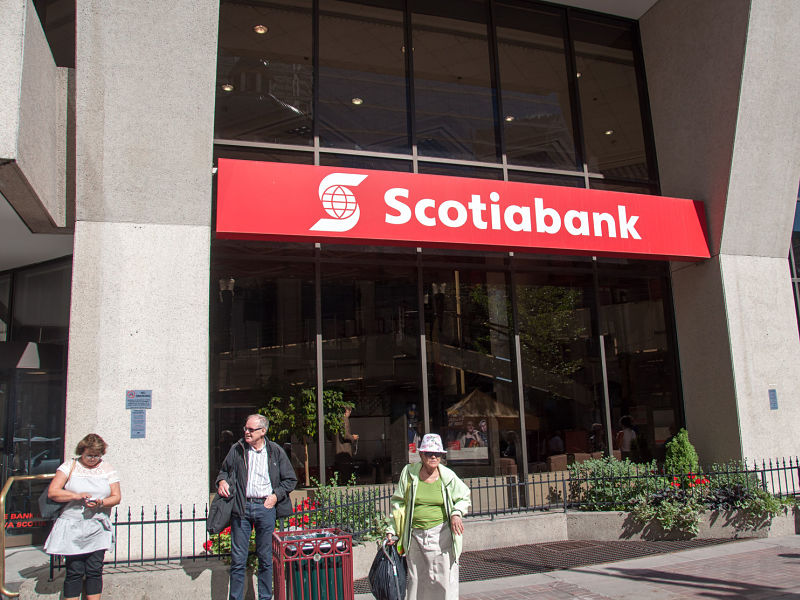
The Bank of Nova Scotia raised its dividend Tuesday as it reported better-than-expected adjusted profit of roughly $2.275 billion for its first quarter, with strong earnings internationally as well as at home.
Toronto-based Scotiabank increased its quarterly payment to common shareholders by 3¢ ashare to 82¢ a share, the third of the big Canadian banks to do so this quarter after Canadian Imperial Bank of Commerce (CIBC) and Royal Bank of Canada (RBC).
On an adjusted basis, Canada’s third-largest lender reported $1.87 earnings per diluted share, up from to $1.58 per diluted share a year ago and higher than the $1.68 a share expected by analysts surveyed by Thomson Reuters.
A year earlier, Scotiabank’s adjusted profit attributable to shareholders was $1.946 billion or $1.58 per diluted share.
“We delivered strong results to start the year, continuing the momentum we built over the last year,” Scotiabank president and chief executive Brian Porter told analysts on a conference call Tuesday.
The lender’s Canadian banking division reported net income attributable to shareholders of $1.1 billion, up 12% compared to the same period a year earlier.
Scotiabank’s Canadian residential mortgage portfolio was $208 billion, up roughly 6.7% from $195 billion a year earlier. For comparison, the bank saw 2.6% growth in its domestic residential mortgage portfolio in the fiscal first quarter of 2017, up from $190 billion in the first quarter of 2016.
The Canadian banks’ mortgage portfolios are being closely watched for any impact from new stiffer rules for uninsured mortgages introduced on Jan. 1. The revised underwriting guidelines require would-be homebuyers with a 20% down payment or larger to prove they can continue to make their mortgage payments if interest rates rise. Banking executives have signalled that these new rules could act as a headwind to the business. CIBC and RBC executives said last week that it is too early to tell what impact the new rules have had thus far.
Meanwhile, earnings attributable to shareholders in Scotiabank’s international banking division was up 16% year-over-year to $667 million, as Scotiabank continues to focus its expansion efforts on the Pacific Alliance countries of Chile, Colombia, Mexico, and Peru.
Its global banking and markets division, however, reported net income attributable to shareholders of $454 million, marking a decrease of $15 million or 3% from the same period a year earlier.
Analysts were generally pleased with Scotiabank’s latest results.
“Overall, this was a good quarter, with positive trends showing through in the areas in which we need them to sustain our positive view on the shares, particularly the good volume growth and good operating leverage in the key operating segments,” said Robert Sedran, an analyst with CIBC Capital Markets, in a note to clients.
The bank’s common equity tier 1 ratio (CET1), a key measure of financial health, was 11.2%, down from 11.3% a year ago and 11.5% in the previous quarter.
Scotiabank’s provisions for credit losses, or money set aside for bad loans, dropped slightly in the latest quarter to $544 million, compared with $553 million a year earlier. However, this quarter was the first to reflect a new accounting standard, known as IFRS 9. The new standard puts a greater emphasis on a bank’s expected losses over the life of the loan, and in turn, introduces more volatility to the measure.